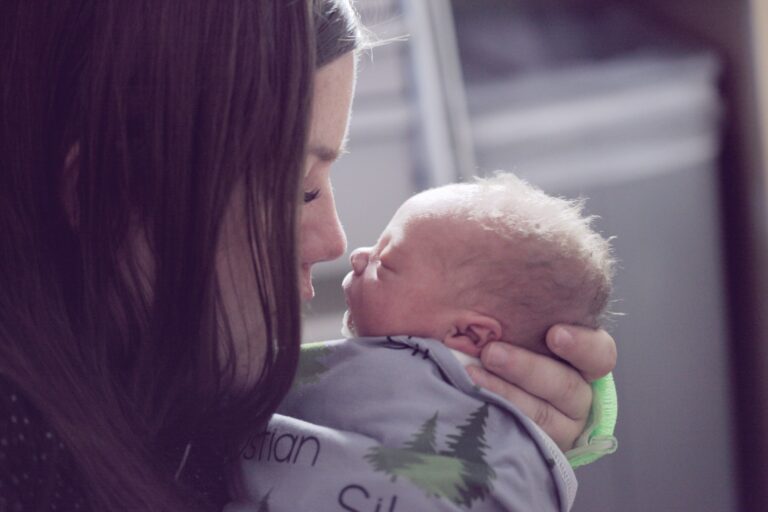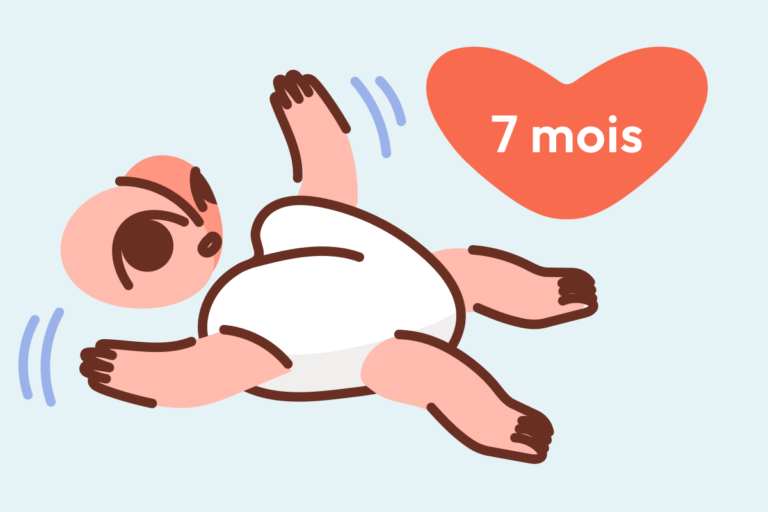Does your little one seem extra wriggly at diaper time, or perhaps struggles to sit still, focus in class, or cope with labels brushing against the lower back? For many parents, such concerns can spark questions about their child’s physical comfort, attention, or even learning capacity. The Galant reflex, an essential yet often overlooked neurodevelopmental response, might hold the answers. By diving into its role, its timeline, and what it means if it lingers, let’s explore how understanding the Galant reflex can ease everyday parenting puzzles. Prepare to discover its influence on posture, coordination, and even those elusive dry nights.
Galant Reflex: Basics and Purpose
Nestled in the earliest chapters of human development, the Galant reflex—also called the truncal incurvation reflex or spinal Galant reflex—makes its grand debut around 20 weeks of gestation. Unique in its action and utility, this primitive reflex is triggered when the skin along one side of a newborn’s back, particularly nearby the lumbar region, receives a gentle stroke. Immediately, the baby’s trunk and hips flex toward the stimulus: an automatic, graceful arc that foreshadows a future of movement.
Why is this innate response there? Nature designed the Galant reflex for practical survival—assisting the baby’s rotation during birth, facilitating the passage through the birth canal, and establishing the initial connections between trunk motion and the vestibular system (the centre for balance and spatial orientation). The Galant reflex, by generating these lateral trunk sways, also lays a foundation for crawling, walking, and even effective bladder control.
Integration Timeline: When Does Galant Reflex Fade?
Those first months rush by in a cascade of rolling, stretching, and wriggling. In tandem, the Galant reflex should naturally integrate—that is, dissipate—between three and nine months after birth. As the child’s brain and nervous system mature, voluntary coordination gradually replaces automatic responses. The reflex’s disappearance signals the transition toward controlled, purposeful movements.
If, however, the Galant reflex persists well beyond this window, it may suggest neurological immaturity or integration difficulties. Subtle, perhaps—but with a ripple effect that can touch concentration, posture, sensory processing, and bladder function.
How to Identify the Galant Reflex: Home and Clinical Checks
Curiosity piqued? At home, a parent can conduct an easy, non-invasive check: gently trace one side of the child’s lower back with a soft object or finger. If you notice a sudden trunk curve or hip shift toward the touch, that’s a sign the reflex is active.
Medical professionals—pediatricians, neurologists, physiotherapists—prefer a precise approach. Holding the baby face down (ventral suspension) or allowing the infant to rest stomach-down, they stroke alongside the spine from shoulder or lumbar to buttocks. A positive response means a distinct, unilateral flexion, whereas a lack of symmetry, heightened sensitivity, or continued response after nine months may trigger further assessment.
Persistent Galant Reflex: Signs and Consequences
What happens if the Galant reflex lingers? Its echoes are rarely dramatic, often masquerading as common childhood quirks or behavioral habits:
- Frequent fidgeting and restlessness in seated positions
- Tendency towards hyperactivity or scattered attention
- Persistent bedwetting (enuresis), especially after turning five
- Discomfort with clothing around the lower back due to tactile sensitivity
- Postural quirks: slouched sitting, pelvic tilt, or gentle scoliosis
- Awkward gait or skipping the crawling stage altogether
How does this manifest day-to-day? Imagine a child always on the move, unable to quite settle in class, struggling with concentration or hand dominance. Or perhaps a routine school day complicated by discomfort, coordination issues, and recurring reminders about posture. Even the simplest activities—writing, running, or quiet reading—can feel unnecessarily challenging. Over time, musculoskeletal pains (especially in the lower back), pelvic imbalances, or even ongoing bedwetting can emerge, all tracing back to an unintegrated Galant reflex.
Risk Factors: Who Is More Likely Affected?
While every child develops at their own rhythm, some factors appear linked to the persistent presence of this reflex:
- Babies born by Cesarean section (C-section), possibly due to reduced tactile feedback during birth
- Premature infants or those with low birth weight
- Experiences of perinatal difficulties—breathing challenges, illness, or oxygen deprivation
- Limited opportunities for tummy time, movement, or free play
- Delayed achievement of motor milestones such as rolling or crawling
- Nutritional gaps, family stress, or lack of sensory stimulation in early months
- Extended periods of illness or physical trauma
Each of these can contribute, independently or together, to a lag in reflex integration—though a child need not have all risk factors for the Galant reflex to persist.
Support and Integration: Practical Steps for Parents
The reassuring truth: most children naturally outgrow the Galant reflex. Still, parents eager to support healthy neurological growth can offer a spectrum of playful, practical activities:
- Daily tummy time, rolling, and crawling games (the basics of trunk movement)
- Soft back massages, exposure to varied textures, or tactile play with lights and sounds
- “Snow angel” stretches or “starfish” arm and leg expansions on a mat
- Slow, controlled crawling drills to encourage symmetrical use of hips and spine
In cases where extra help feels needed—whether due to effects on posture, learning, or bladder control—occupational and physical therapists may craft bespoke exercise plans. These can include rhythmic exercises, vibration or brushing protocols along the spine, and even home routines guided by mobile apps.
Professional support often yields significant changes within months. Increasingly, digital tools allow parents to track progress, explore new at-home movements, and consult experts from the comfort of their living room.
The Galant Reflex and Learning: What’s the Connection?
For some children, a persistent Galant reflex intimately affects attention, sitting still, and fine motor skills. Imagine trying to focus on reading or writing while the body involuntarily distracts—twitching or wiggling with every touch. This can result in hesitancy towards crossing the midline, organizing tasks, or maintaining a stable posture for classwork.
Researchers have started exploring clear links between persistent primitive reflexes such as the Galant reflex and learning difficulties—from ADHD indicators to reading or spatial processing challenges. Fortunately, targeted movement programs have shown promise, although the long-term science remains a work-in-progress.
Collaboration With Healthcare Teams
Medical guidance means peace of mind. Pediatricians and therapists possess the expertise to identify whether the Galant reflex has fully integrated—and, if not, what implications might exist for mobility, posture, or learning. Individualized care plans, regular reassessments, and a tandem effort between home and clinic encourage consistent development.
At home, attentive parents play an equally vital role: noting new quirks, celebrating milestones, and maintaining open dialogue with professionals as needed. The aim is progress, not perfection—healthy comfort, and vibrant growth for every child.
Differentiating: Galant Reflex vs Other Primitive Reflexes
Parenting sometimes feels like a memory game of symptoms and explanations. It’s helpful to remember that not all reflexes are built alike:
- Galant reflex: Triggered by stroking one side of the back, leading to lateral trunk flexion—think of the gentle side-arc of a baby’s spine.
- Asymmetrical Tonic Neck Reflex (ATNR): Caused by turning the head to one side—expect a “fencer’s pose,” with arm and leg extension on the gaze side and flexion on the opposite.
- Moro reflex: Elicited by abrupt loss of support or sudden head movement—watch for arms flinging outward and then recoiling in a startled embrace.
Correct identification steers the process toward the most effective movements and ensures that therapy is tailored and successful.
Future Directions: Science and Innovative Tools
Recent findings have spotlighted the relationship between retained Galant reflexes and advanced concerns like ADHD, sensory processing disorders, and musculoskeletal challenges. Early intervention, especially featuring graded sensory integration, is yielding measurable results—though the field of research is actively evolving.
Interesting developments? The emergence of mobile applications, video-guided exercises, and personalized digital tracking makes staying proactive effortless. Parents, now, can access support tools that blend the expertise of seasoned therapists with the creativity of daily play.
Key Takeaways
- The Galant reflex acts as an important bridge between primitive movement and advanced motor development in infancy—most children naturally integrate this reflex by nine months.
- Persistence may affect posture, bladder control, concentration, and gross motor skills, but supportive exercises and professional advice can greatly improve outcomes.
- Identifying subtle signs, offering regular sensory-rich play, and working closely with knowledgeable therapists or healthcare providers shape a nurturing path for every child’s comfort and success.
- Thousands of parents see positive shifts with early detection and careful attention—gentle daily activities, expert advice, and digital innovations offer a modern toolkit for promoting neurological health.
- For tailored care and up-to-date strategies for your child, try Heloa app for personalized advice and free health questionnaires designed for children.
Questions Parents Ask
Can the Galant reflex persist into adulthood?
The Galant reflex is not typically active in adults. Its presence later in life may hint at underlying neurological or developmental concerns. If such tendencies appear, especially alongside postural or coordination issues, a professional consultation can help determine the right course of action.
What if my older child still shows a strong Galant reflex?
A positive Galant reflex test beyond infancy may point toward delayed nervous system maturation, possibly linked to movement, posture, learning, or even attention challenges. Yet, this is just one part of the overall picture. Seeking clarification from a pediatrician, physiotherapist, or occupational therapist brings peace of mind and a targeted plan for moving forward.
Are there differences in the Galant reflex for premature babies?
Premature babies may display variations or slight delays in reflex responses, including the Galant. Lower gestational age or birth weight, ongoing maturation, or early medical issues can influence the strength or timing. For parents of preterm infants, regular developmental follow-up with healthcare professionals is the best strategy—these children often catch up, but a tailored approach ensures the healthiest trajectory.









